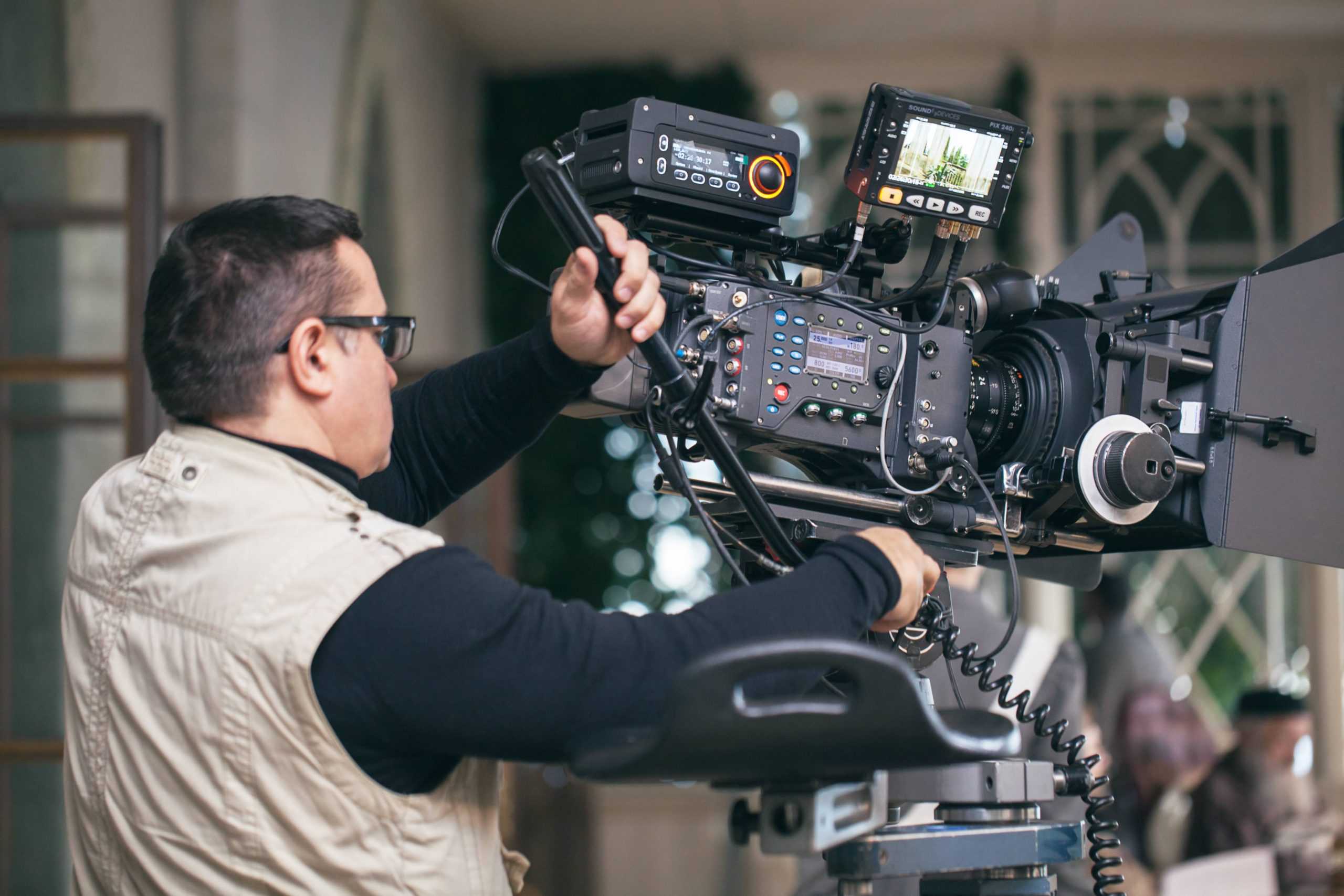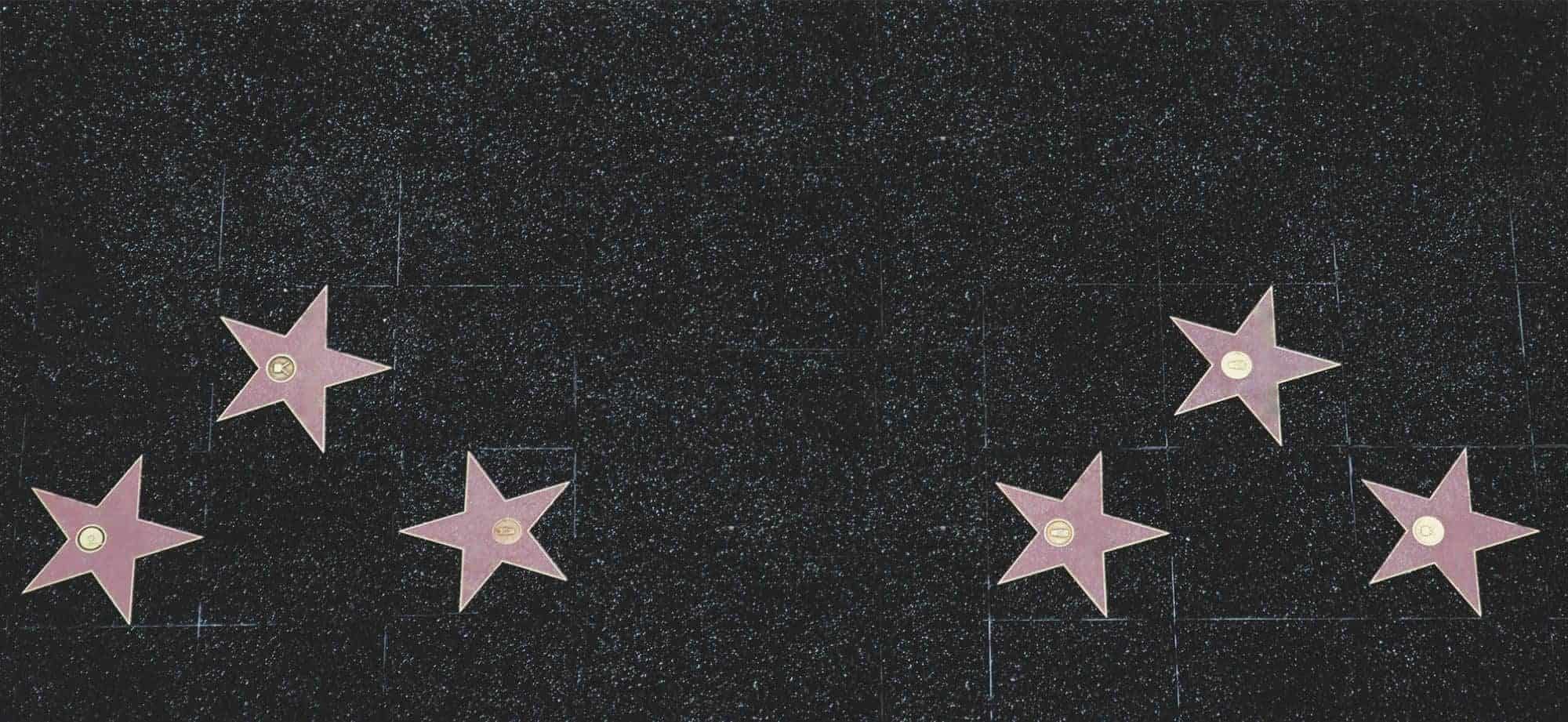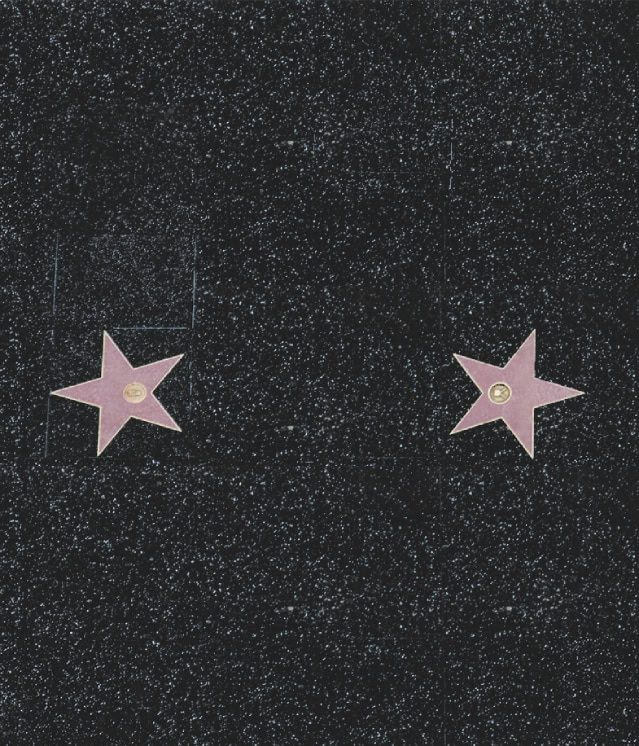
When to use a two shot camera angle
Using a two-shot camera angle when capturing footage can really make a difference. It frames two subjects in the same shot, connecting them. This technique works well for conversations, interviews, or moments of emotion. It adds depth and interaction to visuals, which helps with storytelling.
This angle lets viewers observe the connection between characters or subjects. It can show a bond between two people in a conversation, or highlight the contrast between conflicting personalities. It can make audiences empathize and draw them into the narrative.
It can also be used for practical reasons. For example, instructional videos or documentaries may need to show the instructor and the subject matter at the same time. This ensures viewers understand how things are done while keeping their attention.
Pro Tip: When using a two-shot camera angle, make sure both subjects are visible. Balance is key for creating an attractive shot that conveys the message or story.
Definition of a two-shot camera angle
A two-shot camera angle is a technique utilized in photography and filmmaking that captures two subjects in one frame. This angle has multiple uses, such as:
- Showcasing interaction between people, highlighting their dynamics and emotions.
- Creating a balanced composition by positioning the subjects side by side.
- Enriching the narrative by capturing relationships and conflicts.
- Establishing continuity during conversations or dialogue scenes.
- Constructing an impactful visual contrast with contrasting characters or elements.
- Capturing simultaneous reactions of different characters.
This method also applies to photography, for portraiture or capturing interactions between individuals.
Stanley Kubrick utilized this technique often, to emphasize human connections and dynamics on screen.
Explanation of when to use a two-shot camera angle
A two-shot camera angle is commonly used in filmmaking to portray a conversation or interaction between two characters. This angle is chosen when the director wants to emphasize the relationship between the two characters and their reactions to each other. By framing both characters in the shot, it allows the viewer to see their facial expressions, body language, and the dynamics between them.
Using a two-shot camera angle can be particularly effective when there is a conflict or emotional exchange between the characters. It helps to create a sense of intimacy and allows the audience to fully immerse themselves in the scene.
It is important to note that the two-shot camera angle should not be overused. It should be used strategically and in moments where it adds value to the storytelling. Overusing this angle can make the scenes visually monotonous and may reduce its impact.
Pro Tip: When using a two-shot camera angle, consider the positioning and framing of the characters carefully. It is essential to create a visually balanced composition that enhances the interaction between the characters.
The two-shot camera angle: The perfect way to capture intimate moments between characters and expose their toxic partnerships – it’s like therapy, only cheaper.
Enhancing storytelling and character dynamics
The two-shot camera angle can show two characters in the same frame. This reveals their emotions and reactions. It also helps viewers to see the glances, gestures, and expressions that express feelings without words.
The two-shot camera angle can also emphasize contrasts or similarities between characters. Placing them side by side shows physical differences or common traits. This helps viewers to understand the characters’ motivations and the story.
Directors must consider factors such as framing, composition, and camera movements when using a two-shot camera angle. Different angles and distances can change the connection between characters. Camera movements like pans and tracking shots add energy and engagement for the audience.
Lighting and set design are important as well. Lighting must be even for both characters. Set design should include elements that reflect each character’s personality or show their relationship.
Providing visual variety and interest
A two-shot camera angle adds visual variety and interest. It can include multiple elements in one frame, providing depth and complexity to the composition. By contrasting different elements, it captures the viewer’s attention. This technique can be effective in film and photography.
The two-shot camera angle also explores relationships between characters or objects. It shows interactions and reactions, which can enrich the narrative. This angle can also break up monotony by providing a fresh perspective. The contrast created by different subjects or perspectives adds excitement to the composition.
Alfred Hitchcock is one of many experienced directors who used the two-shot camera angle. He created suspense and emotion by strategically positioning characters or objects. This technique enabled him to convey subtext and enhance storytelling.
Emphasizing the relationship between characters
A two-shot angle can capture characters’ reactions simultaneously, making their emotions stand out. It creates an immersive experience for the audience, allowing them to feel connected with the story.
The use of a two-shot angle provides context and spatial awareness. It helps viewers understand the proximity and position between characters and enhances storytelling.
This technique can also be used for supporting or background characters, adding depth and complexity to the narrative.
Roger Deakins and Rachel Morrison, professional cinematographers, suggest experimenting with different shot compositions and perspectives to bring out unique aspects of character relationships.
Step-by-step guide on how to set up a two-shot camera angle
A two-shot camera angle is used in filmmaking to capture two subjects in a single frame, providing visual context and emphasizing their relationship. Here is a step-by-step guide on how to set up a two-shot camera angle:
- Determine the purpose: Decide why you want to use a two-shot camera angle. Is it to show a conversation between two characters or highlight their interactions?
- Select the right lens: Choose a lens that allows both subjects to be in focus and maintains their proportions. A medium or wide-angle lens is often preferred for a two-shot.
- Position the subjects: Arrange the subjects in a way that visually represents their relationship. They can be standing side by side or facing each other, depending on the desired effect.
- Frame the shot: Use the rule of thirds to compose a visually pleasing shot. Place the subjects along the intersecting lines or at their points of convergence.
It is important to note that a two-shot camera angle should be used when it enhances the storytelling or supports the narrative. It can be particularly effective in conveying emotions during conversations or emphasizing the dynamics between characters.
A fascinating fact about two-shot camera angles is that they were popularized by directors like Alfred Hitchcock, who used this technique to heighten tension and create suspense in his films.
The wrong camera can make your footage look like a blindfolded chimp was in charge, so choose wisely and avoid rogue primate cinematography.
Choosing the right camera and lens
Optimal results come from considering the lighting and environment. Low-light? Get a camera with great low-light performance and a fast lens with a wide aperture such as f/1.8 or wider for more light and less noise. When selecting a lens, decide on the right focal length. Wide-angle for more of the scene. Telephoto to zoom in on subjects. Image stabilization technology is worth considering. It reduces blur caused by camera shake. Many cameras offer built-in stabilization or lenses with optical stabilization.
Don’t miss out on creating visually striking content! Invest in quality equipment for precision and clarity. Start exploring today and elevate your photography or filmmaking skills!
Positioning and framing the characters
Consider the characters’ relationship first. Are they friends, lovers, enemies, or equals? This helps you decide how close they should be. For example, if they’re close, place them side-by-side.
Look at their height difference. Adjust their positions accordingly. If there’s a large gap, one should stand higher or lower to balance the frame.
Eye contact is also important. To increase tension or chemistry, position them so their eyes meet in the frame.
Also, think about blocking and movement. Leave enough space between them for any action in the script. Blocking can add depth.
When framing, use the rule of thirds. Divide the frame into nine parts. Place the characters along these lines or at their intersections.
Be aware of props and background elements. Decorations can help reinforce the mood. Avoid busy backgrounds that draw attention away from the characters.
To master two-shot angles, consider characters, relationships, emotions, and framing. Experiment with positions, use the rule of thirds, and be aware of the background. This will create a visually appealing shot with emotional resonance.
Adjusting lighting and other technical considerations
Get the right mood. Work out what the scene needs. Bright lights for energy or soft for intimacy?
Place lights cleverly. Play with angles to get the desired effect. Key lights bring out features. Fill lights soften shadows. Backlights create separation and depth. Placement can beautify the shot.
Be aware of color temperature. Match all light sources to avoid mismatched tones.
Manage shadows. Position lights to minimize harsh shadows.
Additionally, get exposure, focus, and camera settings right. Test shots before recording. Practice makes perfect!
Enthusiastic shooters, step up your productions! Master lighting and other skills. Experiment today!
Capturing the scene and footage
Choose a spot that matches your shot. Look at lighting, background, and distractions. Scout the area first to get a good shot.
Position your cameras. One should be far away for a wide-angle view. The other should be close to capture details.
Match the settings on each camera. Frame rate, resolution, and white balance should be the same.
Use different lenses. Wide-angle is great for overall shots. Telephoto can show details.
Change angles. High and low angles create emotion.
A true story: I set up two cameras at a live concert. One was far for wide shots. The other was on a crane for aerial shots. This created an engaging visual experience.
Tips and techniques for using a two-shot camera angle effectively
Using a two-shot camera angle effectively requires certain tips and techniques to produce a well-composed and visually appealing shot. Here are some key points to consider:
- Subject Placement: Position the subjects in the frame in such a way that they are clearly visible and balanced. This could involve placing them side by side or at different depths within the shot.
- Eye Contact: Encourage the subjects to make eye contact with each other or with the camera to establish a connection and engage the viewer.
- Composition: Pay attention to the overall composition of the shot. Consider elements such as the rule of thirds, leading lines, and symmetry to create a visually pleasing image.
- Background: Be mindful of the background when setting up a two-shot. Ensure that it is not distracting or cluttered, as it can take away from the main subjects.
- Timing and Direction: Coordinate the actions and movements of the subjects to capture a natural and dynamic interaction. This can add depth and interest to the shot.
To further enhance your two-shot camera angle, keep in mind the unique details that contribute to its effectiveness. These may include factors such as lighting, camera movements, and the use of props or background elements to support the narrative or enhance the visual storytelling.
Pro Tip: Experiment with different angles and perspectives to create variety and capture different emotions or moods in your two-shot compositions.
Remember, mastering the use of a two-shot camera angle effectively requires practice and experimentation. By incorporating these tips and techniques, you can elevate your photography or videography skills and create compelling visuals.
Seeing double can be either a drinking game gone wrong or a two-shot camera angle done right.
Ensuring clear visibility of both characters
For great two-shot visibility, there are several things to keep in mind:
- Positioning the characters well in the frame is crucial. Placing them off-center can create balance and stop one character from dominating. Adjusting the camera height and angle can also help by giving a better view of faces and body language.
- Lighting is also important. Illuminating both characters lets their features be seen and expressions understood. Soft, diffused lighting sources can reduce shadows and give a better look.
- Composition is vital too. By using lines or framing, the audience’s eye can be taken to each character without distraction. Using props and set design elements can make the shot clearer while still keeping focus on the characters.
- When shooting scenes with multiple angles, continuity is essential. Keeping spatial relationships similar from shot to shot helps viewers understand.
Paying attention to composition and balance
Creating a stunning two-shot camera angle? Comp and balance are key! Positioning and arrangement of elements matter a lot. To get it right, consider the placement of each subject and how they relate. Make sure they’re not too close or far apart. Also, keep an eye on the background – it should complement the subjects. As for balance between the two, it should be even, both physically and in the frame. Don’t let one overpower the other.
Lighting is also important. Use it to evenly highlight the subjects and create depth. Roger Deakins said it best: “Composition is about finding those moments where all elements come together harmoniously to tell a story.” Comp and balance are essential for captivating visuals and great storytelling.
Using camera movements to enhance the shot
Camera movements can bring great vibrancy to your shot. They add depth, drama, and emphasis, making the visuals more striking. Here’s a six-step guide on how to use camera movements to enhance your shots!
- Pan: Move the camera horizontally from one side to the other. This is often done to reveal new elements in a scene or to follow a subject’s movement. Use a tripod or other stabilization equipment for smoothness.
- Tilt: Move the camera up or down while keeping its horizontal axis fixed. This is good for emphasizing height or depth in a scene.
- Zoom: Change the focal length of the lens while keeping the camera stationary. You can create an illusion of motion or draw attention to specific details.
- Tracking: Follow a subject’s movement by moving the camera. Great for action sequences or capturing fluid movements.
- Dolly: Move the entire camera setup towards or away from the subject. Adds dimension and depth to scenes.
- Crane: Use cranes or booms to achieve vertical camera movements. Often used for high-angle shots or establishing shots.
Consider the purpose of each camera movement. Experimenting with combinations can help you convey emotions and highlight details. Practice is essential to perfect your skills. According to a study, camera movements capture the audience’s attention and enhance emotional engagement.
Examples and case studies of successful use of two-shot camera angles
Two-shot camera angles can be powerful. They capture meaningful moments and help to tell stories in films, TV, and documentaries. Two subjects are in the same shot, offering an intimate look at their interaction.
A great example is the film “Casablanca.” The iconic scene with Rick and Ilsa shows emotions in a close-up. The two shots show tension and emotion, enhancing the dialogue.
The hit series “Breaking Bad” used two shots to show Walter White and Jesse Pinkman’s complex dynamics. It showed their experiences and motivations.
In “The Godfather”, two shots show the power in the Corleone family. Michael Corleone’s scenes with his father Vito or brother Fredo show both unity and tension.
A recent wedding ceremony used a two-shot to capture the vows. It highlighted the partners’ facial expressions, allowing viewers to experience the emotion in their eyes.
Conclusion
Using a two-shot camera angle can greatly improve visual storytelling. It adds depth and complexity to the narrative. It also allows for more focus on character interaction and relationships. Plus, it can convey a lot of info in one shot. Lastly, it’s great for creative techniques, like movement or framing.
This technique can be very effective in filmmaking. It boosts engagement and helps filmmakers create more impactful narratives. To illustrate this, I’ll tell a true story.
We were producing an independent film called “The Encounter”. Our Director of Photography chose to use a two-shot angle for key dialogue scenes. The results were amazing. The conversations between characters felt so real and captivating. By seeing both characters’ reactions at the same time, the audience really connected to the emotional nuances of the story. This showed the power of using a two-shot camera angle strategically to enhance storytelling.
Frequently Asked Questions
FAQs: When to use a two-shot camera angle
1. Q: What is a two-shot camera angle?
A: A two-shot camera angle is a framing technique where two subjects are filmed together within the same frame.
2. Q: When should I use a two-shot camera angle?
A: You can use a two-shot camera angle when filming conversations, interviews, or scenes involving two characters interacting closely.
3. Q: What are the benefits of using a two-shot camera angle?
A: Using a two-shot camera angle adds visual interest, allows the audience to see the dynamic between two characters and creates a sense of connection between them.
4. Q: Can a two-shot camera angle be used in any type of video?
A: Yes, a two-shot camera angle can be used in various video formats such as films, TV shows, documentaries, and even vlogs.
5. Q: Are there any specific guidelines to follow when using a two-shot camera angle?
A: It is essential to ensure both subjects are clearly visible in the frame, maintain proper composition, and consider the visual balance between the characters.
6. Q: How does a two-shot camera angle differ from other framing techniques?
A: Unlike a single-shot or wide-angle shot, a two-shot camera angle focuses on capturing the interaction and reactions between two subjects, providing a more intimate and engaging viewing experience.
Subject: When to use a two shot camera angle
Company: Hollywood Connections Center
Network: MyHollywoodPage.com
The Hollywood network of arts and creative professionals.





